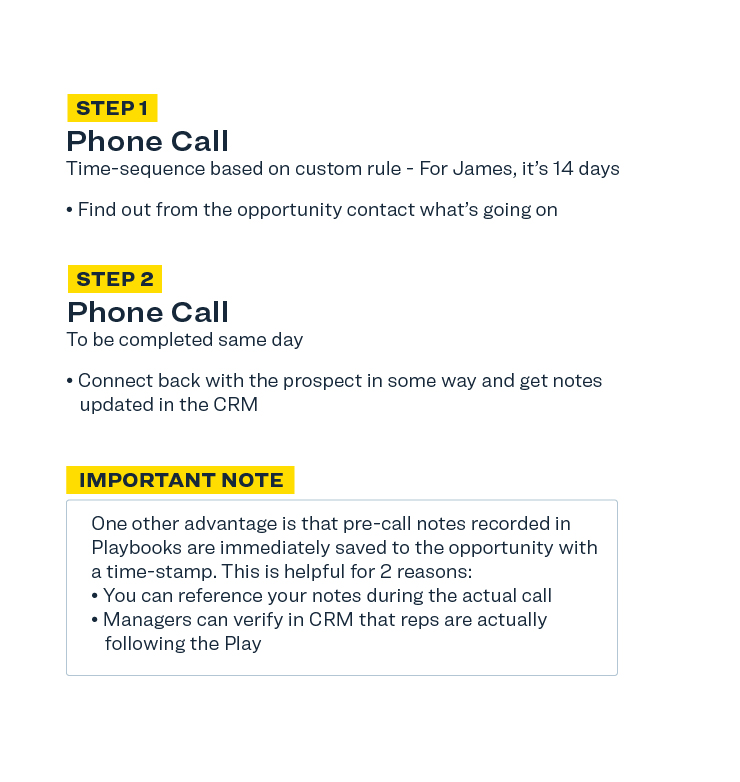Two Hacks For Building a Healthy Pipeline
Aaron Janmohamed
It’s amazing how many people sell products they don’t actually use but should, for the same reasons they’re telling prospects they should.
If you believe it’ll work for them, it will work for you. Drinking your own kool-aid, as it turns out, adds credibility to your story.
So I wanted to share a couple of simple but gnarly use cases for leveraging Playbooks to build a strong pipeline by engaging opportunities, and to plug revenue leaks, developed by one of our very own AE’s: the enigmatic, but always smiling, James Allen.
RESULTS TO EXPLAIN WHY YOU SHOULD CARE
Why am I picking on James? With the tactics below, James has hit a net-new win rate of 29% on Stage-2-to-Closed-Won opportunities, and he has doubled his quota attainment two years in a row.
This is the kind of stuff that actually makes a difference on performance, and we’ve replicated it across our own team. What kind of impact has that had? Our inside sales team has achieved 7 straight quarters of quota attainment.
SCENARIO 1: Discovery Call Prep & Opportunity Progression
A lot of good leads fall through because of a poorly executed discovery call. And reps waste a lot of time chasing bad opportunities that should not have made it into the pipeline in the first place.
Our research shows reps spend 297% more time chasing bad deals as opposed to good deals.
James, who may be related to Rain Man, has a fairly detailed process for prepping for calls with leads set up by Business Development and for developing Stage 1 opportunities.
He calls it, “My detailed process to prepare for calls with leads set up by Business Development – it streamlines how I move Stage 1 opptys to Stage 2,” AND he programmed it as a Play into Playbooks “so I don’t cut corners.”
A quick note on Plays for those who are uninitiated: Plays are strategic, multi-channel engagement strategies, or cadences.
HERE’S HOW IT GOES
First, before anything else, James built a custom Automation Robot to monitor changes on his accounts in CRM. When a new stage 1 opportunity is created by the BDR, the Robot auto-enrolls the opportunity into the below Play.
>>Important note: Yes! In Playbooks, you can build Plays off of the opportunity object, as well as off of leads, contacts, and cases AND you can auto-enroll these objects based on rules you define.

SCENARIO 2: Salvaging Neglected Opportunities
So often reps get overwhelmed juggling an unlimited stream of tasks and an infinite spectrum of client personalities and stages.
Sometimes, stuff falls through the cracks. We’re all human. We forget stuff and we can’t watch the CRM 24/7.
But Robots can!
Automation Robots in Playbooks come to the rescue yet again. They monitor the CRM 24/7. Managers also get added visibility because if they ever see a record enrolled in a Play like this one, they’ll know the rep is forgetting something.
This next Play isn’t overly strategic or complex. In fact, it’s just two steps. But, it has saved more than one reps’ buttocks on multiple deals, multiple times.
HERE’S HOW IT GOES
The Automation Robot in this Play is set to monitor opportunities with a built-in alert mechanism for when they go 14 days without some kind of activity.
If that happens, the Robot enrolls it into the below two-step Play and notifies the rep that they’re dropping the ball.

>Important note: Playbooks allows you to set up time-sequenced alerts. Think of all your CSM’s loaded with accounts that come up for renewal. Has anyone ever engaged an account too late about their renewal? Never again!
WHY THESE PLAYS MATTER
When you throw garbage into your pipeline, you’re committing your time away from closeable deals. It also increases your risk of letting good deals fall through the cracks.
Clean up and structure your discovery process. Set up alerts. These hacks are two of easiest but most important things you can do to make sure you prioritize the things that matter most.